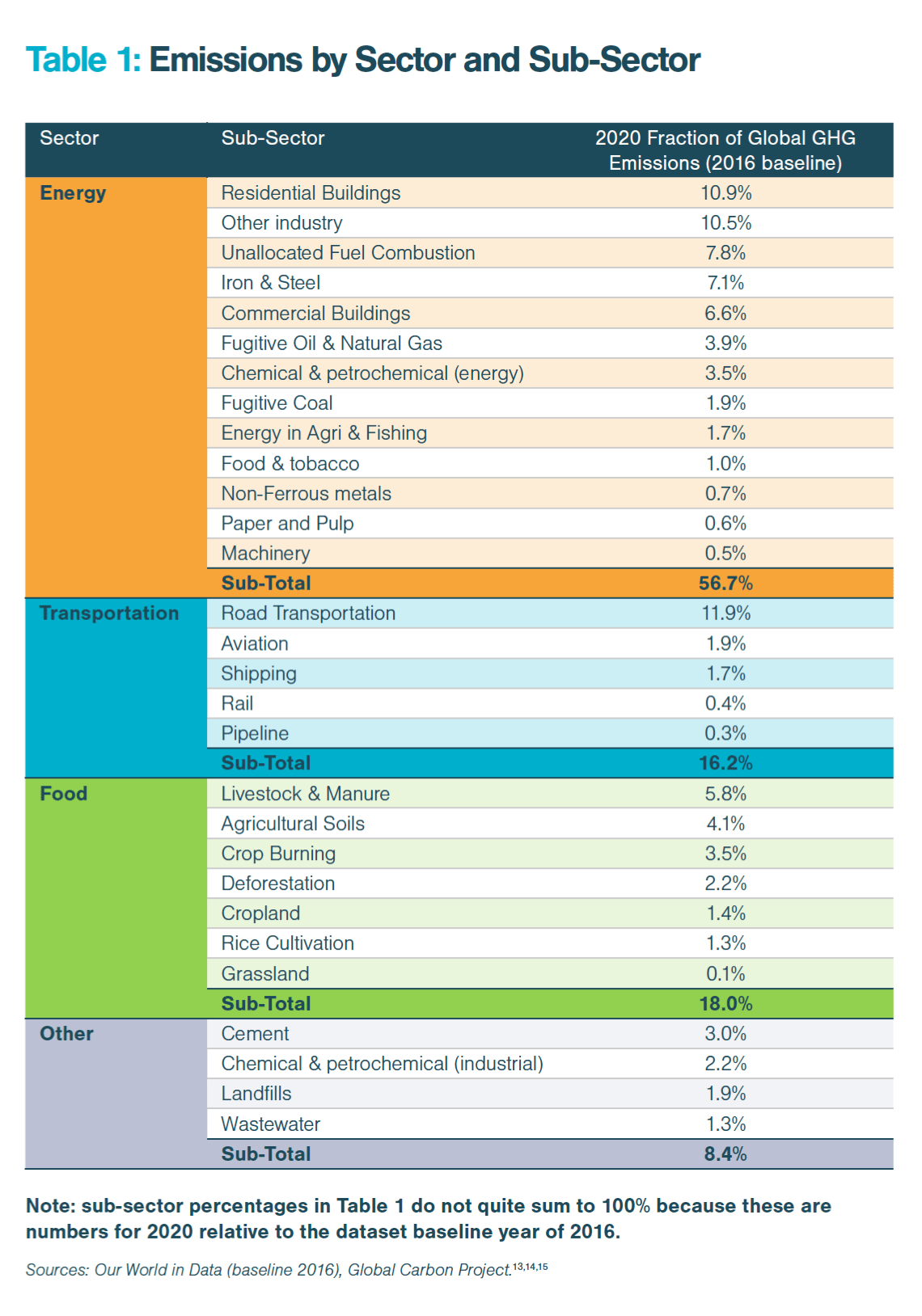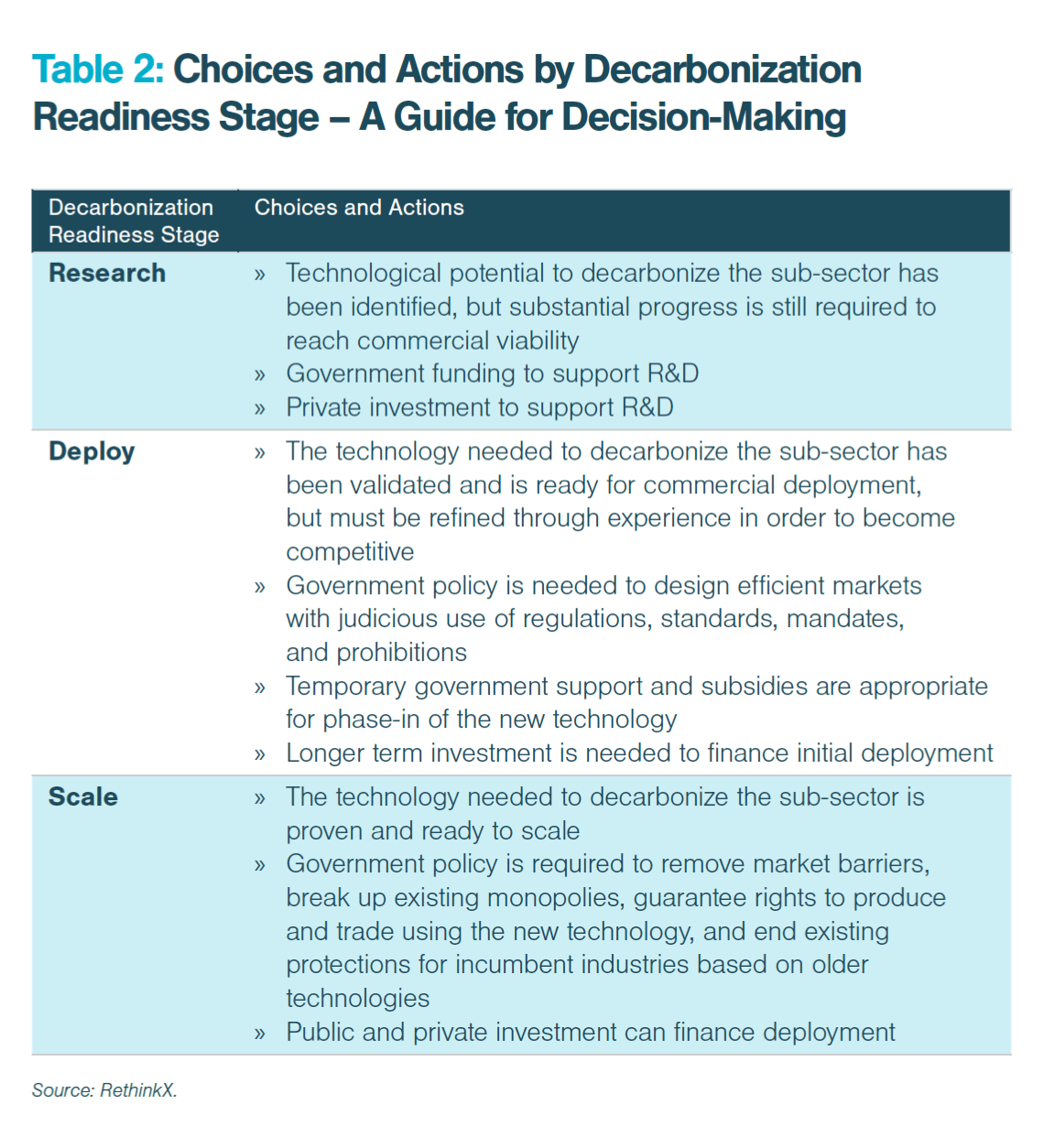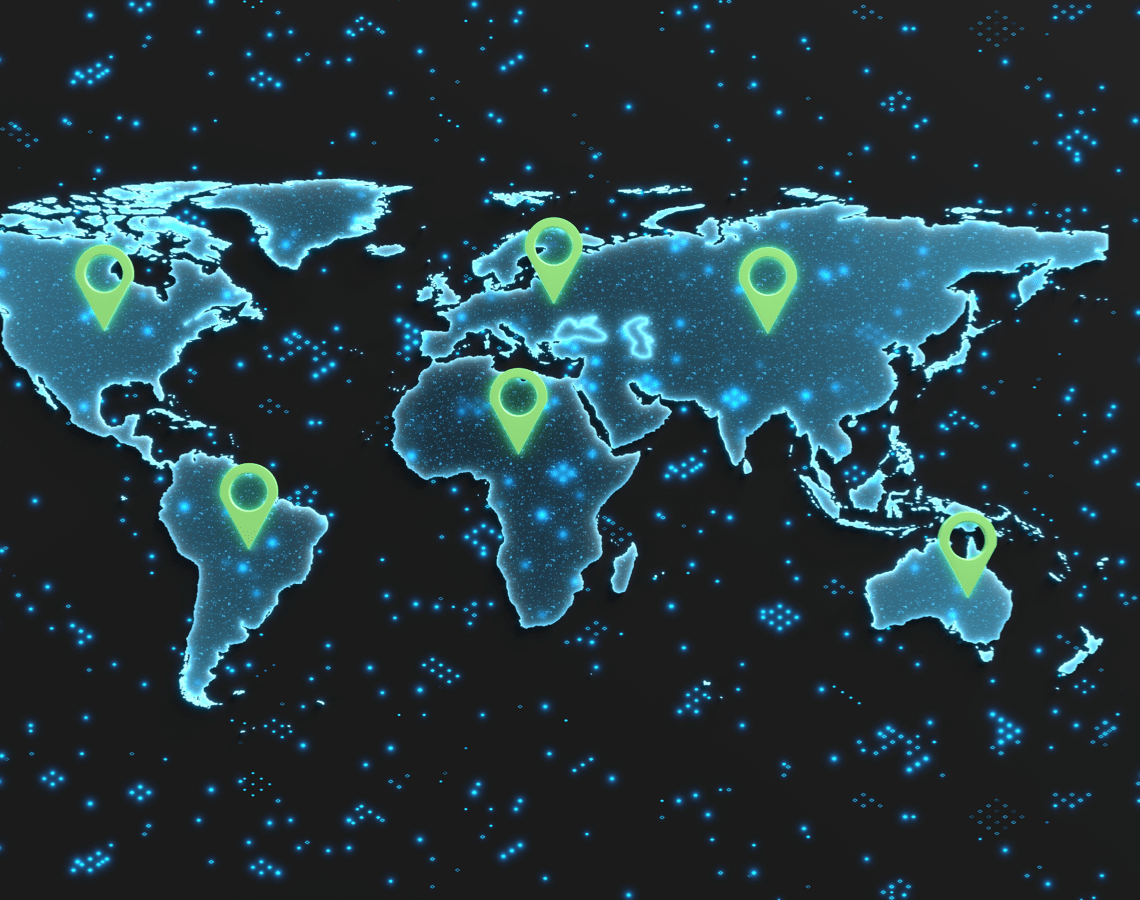Topic / Climate Implications / In-depth
Climate Advice for Decision-Makers

Societies can choose to accelerate global greenhouse gas mitigation to reach net zero emissions before 2040 and lay the groundwork for a complete solution to climate change
Societies and decision-makers around the world must make the right choices
By supporting eight technology disruptions across three foundational sectors—energy, technology, and food and agriculture—we can solve the climate crisis, save trillions of dollars and usher in a new era of clean prosperity...
Or we can waste precious time and trillions of dollars propping up the incumbent system with an ineffective approach that exposes humanity to the risks of climate change impacts.

Categorizing emissions sources according to their decarbonization readiness offers a powerful guide for decision-making, based on how to maximize emissions reductions as soon as possible.
How do we determine decarbonization readiness?
First, we need to understand emissions
The table to the left is based on data assembled by the Our World in Data project at Oxford University.
This table shows that:
- The majority of global greenhouse gas emissions today (56.7%) are associated with energy use, primarily in the form of carbon dioxide (CO2) produced from burning fossil fuels.
- Emissions from the food sector, largely in the form of methane (CH4) and nitrous oxide (N2O), comprise 18% of global emissions.
- The transportation sector comprises a smaller share at 16.2%, but the sub-sector of road transportation is the largest single source of emissions within Transportation at 11.9%.
- Other sources outside these three sectors amount to 8.4% of global emissions, the largest source of which is cement production at 3%.
This data shows that over 90% of global emissions fall into the three sectors poised for disruption over the next 15 years.

Second, we need to understand decarbonization readiness
Each sub-sector of the global economy will be affected by the disruptions of the energy, transportation, and food & agriculture sectors differently.
Decarbonization readiness refers to the maturity of the technologies required to mitigate emissions from each sub-sector.
These technologies include Solar, wind and batteries (SWB), Autonomous Electric Vehicles (A-EVs), Transport-as-a-Service, Precision Fermentation and Cellular Agriculture (PFCA), and any other technologies that contribute to decarbonization.
In some sub-sectors, such as road transportation, decarbonization runs parallel to the disruption. There will be no lag because no additional technologies are needed beyond SWB, A-EVs, TaaS, and PFCA.
But in other sub-sectors, such as aviation, there is likely to be a lag in decarbonization because technological advancements in electric aircraft and energy storage are still required.

Finally, we categorize each sub-sector into one of three stages of mitigation readiness – ‘research’, ‘deploy’, or ‘scale’
This framework provides a guide for decision-makers looking to prioritize efforts in emissions reduction. It also shows where economic, social, and environmental goals can be realigned by clean technologies.
Without such a framework, decision-makers do not have a focused approach to fighting climate change, which runs the risk of misallocating financial, material and political resources.
This framework shows where market forces can be leveraged to drive emissions mitigation, rather than relying on governments to do the heavy lifting.

Policymakers, investors and civic leaders must consider a sub-sector's mitigation readiness stage before making a decision
Three stages of mitigation readiness:
Research stage
Describes a sub-sector that needs more research as there are few, if any, technologies that can allow this sector to achieve decarbonization
We categorize sub-sectors such as wastewater or rice cultivation as examples at the research stage because there are few if any technologies currently on the horizon that would allow them to achieve full decarbonization. Support for further research and development is needed.
Deploy stage
Describes a sub-sector that requires additional technologies than those already in place to achieve decarbonization
The residential heating sub-sector is categorized in the deploy stage. It requires SWB to supply clean energy and needs additional technologies—induction cooktops to replace gas stoves, electric water heaters to replace gas water heaters and electric heat pumps to replace gas furnaces and oil-fired boilers.
Scale stage
Describes a sub-sector that is ready to be scaled, because the technologies required are already being deployed to market
For the example of fugitive oil and natural gas, virtually all emissions in this sub-sector will be directly eliminated by the energy and transportation disruptions without requiring additional technologies. We categorize this sub-sector as ready to scale because the technologies required for decarbonization—SWB, A-EVs and TaaS—are already being deployed to market.
To maximize the benefits of disruption, decision-makers should focus attention and resources to where the fastest and most impactful opportunities for emissions mitigation are located
How else can leaders maximize the climate benefits of disruption?
Ensure open, competitive and transparent markets
Since the overwhelming majority of these opportunities already lie in the deploy and scale stages, our primary efforts should be on enabling economic forces to do the heavy lifting by ensuring open, competitive and transparent markets.

Remove barriers
This means removing barriers that favor the incumbents such as utility monopolies in the energy sector, removing regulatory hurdles to electric and autonomous vehicles in the transportation sector, and removing livestock farming subsidies and protections in the food sector.

Embrace disruption
Those who choose to embrace and lead the disruptions will reap enormous economic and social rewards as well as environmental benefits.

Accelerate disruption
Some may choose to lead and accelerate the disruptions in order to capture the extraordinary economic benefits, or to mitigate dependence on imported fragile food and energy supplies. Others may do so for the political capital to be gained.

Embracing and implementing disruptive technologies will allow us to tackle the climate crisis, and open the door to global prosperity and potential
Other advantages of embracing disruption:
Race to the top
Any first mover will be able to reap incredible rewards from accelerating and implementing disruptive technologies early on
As different actors seek to accelerate the disruptions in their own context to avoid risks or secure advantages, the ensuing race to the top will generate further powerful accelerating feedbacks that will compound the speed and scale of disruptions worldwide.
RethinkX are experts in disruptions. We have used our Seba Technology Disruption Framework to predict disruptions in foundational sectors and inform our research.

Decentralization & democratization
The emerging disruptive technologies across our energy, transportation, and food & agriculture sectors are inherently decentralized, and will allow less-developed areas to leapfrog over previous barriers to human development.
First movers who act on embracing these disruptions will lift their disadvantaged populations into prosperity, and level the playing field between rich and poor economies.

Reforestation and carbon withdrawal are possible
The combination of superabundant clean energy, electric and autonomous vehicles and machines, and billions of hectares of land freed from animal agriculture will transform the economics of both reforestation and technology-based carbon withdrawal.
Although reaching net zero emissions will not solve the problem of climate change entirely on its own, it represents a huge step in the right direction.
The same technologies that make these dramatic emissions reductions possible will also make carbon withdrawal at the gigaton scale feasible.
This makes the three disruptions doubly essential for achieving a complete climate change solution.


Free Download
Uncover Disruption in more depth
Download our Rethinking Humanity report






















-min-2.png?width=732&name=Copy%20of%20Website%20imagery%20-%20Featured%20Image%201200x628%20(1)-min-2.png)




